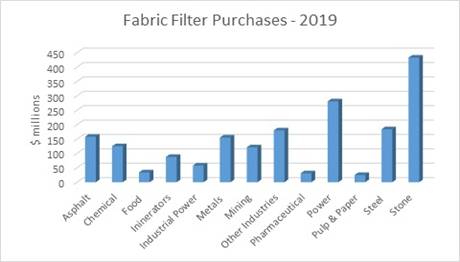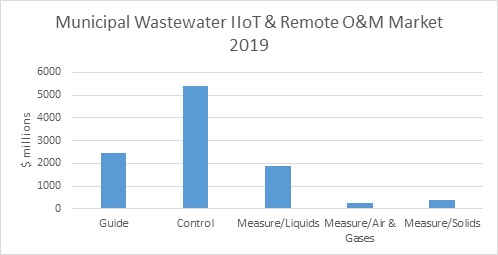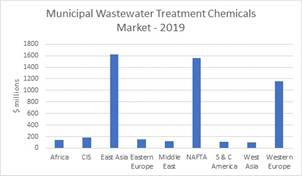
WELCOME
Weekly selected highlights in flow control, treatment and combustion from the
many McIlvaine publications.
The
Challenge of Choosing the Best Coal Fired Power Plant Air Pollution Control
Technologies
Join us on Wednesday August 22 to
discuss a program that both helps suppliers demonstrate that they have the
lowest total cost of ownership solutions and help end users pick the best
systems and components.
Registration details are shown below
The EU is making difficult choices regarding mercury control technologies to
meet new 2021 limits. Asian power
plants are retrofitting air pollution control equipment as well as investing
many billions of dollars in APC for the new plants.
What assurance does the purchaser have that he is buying the products with the
lowest total cost of ownership (LTCO)?
Did he choose the right process?
Did he choose the right components for that process? The McIlvaine
Company began assisting coal plants make the best choices with multi thousand
page loose leaf manuals which were continually updated.
One set covered electrostatic precipitators, another covered fabric
filters. One set covered monitoring. The set covering FGD was later expanded to
also include DeNOX.
With the arrival of the digital age McIlvaine began supplying these services in
a digital format but with the same goal which was to supply the four knowledge
needs: Alerts, Answers, Analysis, and Advancement.
These are included in
44I Coal Fired Power Plant Decisions.
As the digital age matured McIlvaine developed a whole new service
N031 Industrial IOT and Remote O&M.
We are now looking at a post digital Age where the Industrial Internet of
Wisdom (IIoW) empowers IIoT. One of
the results will be a whole new approach to helping purchasers select processes
and systems with the LTCO.
With remote monitoring and IIoW the information about the cost of ownership of
power plant air pollution control is soaring.
The nozzle, bag, catalyst or other component supplier with the lower
total cost of ownership (TCO) will have a much greater right-to-win than the
competitor with a better position in the market.
The air pollution control (APC) company spending more on R&D and less on
positioning will ultimately prevail.
The APC company interested in sharing rather than concealing knowledge
will have the advantage.
If an APC company has the lowest total cost of ownership (LTCO) for a particular
application it should encourage transparency and maximum interconnection of all
the people and knowledge resources relative to that application.
This includes information about competitor products.
The goal for the APC company is to continually provide lowest total cost of
ownership validation (LTCOV). This means it must convince purchasers that it has
a TCO lower than competitors. So
the more that is known about competitors or about alternative solutions the
better. This assertion is easily
justified for high performance components or consumables.
The supplier of a filter bag which lasts three years compared to only two
years for the competition will benefit from maximum dissemination of this
information.
The assertion is more challenging when it comes to systems. In fact it seems
that the more that is known about the success of a system design the more likely
it is that some imitator in the next country to pass stringent regulations will
start with a license and soon become a competitor.
There are two related ways
the supplier of systems can avoid this fate.
1.
Participate in the operation and
maintenance of each system through remote monitoring and use of subject matter
ultra-experts (SME’s with access and use of decision systems in the area of
expertise)
2.
Accelerate R&D and continually improve the TCO of the design
W.L Gore has pioneered a new
mercury removal technology with much lower TCO for coal fired plants where the
right combination of regulations, coal being burned and type of SO2
scrubber exist. Innovative use of catalytic filtration could result in big TCO
reductions. McIlvaine conducted
nine hours of webinars with 80 people for BHE.
The consensus was that a new combination of existing technologies
integrated into a hybrid system would save BHE hundreds of millions of dollars
for NOx control at two plants. The
industry accidently found the perfect way to use air pollution control systems
in power plants to generate a rare earths feed stock.
|
|
A system supplier with modest additional R&D can offer a very attractive
TCO option with this two stage scrubber approach.
Remote monitoring and operational support can greatly lower the TCO. MHPS,
Doosan, GE and others are already
demonstrating this. Their success
is continually covered in the
McIlvaine IIoT and Remote O&M
newsletter which is included in in
44I Coal Fired Power Plant Decisions.
Lowest Total Cost of Ownership Validation (LTCOV) necessitates providing as much
information about the industry, process, product, and competitive alternatives
as possible. The supplier must convince the purchaser that the supplier’s
product is the LTCO option. This
can occur only with the interconnection of the relevant knowledge and people.
The supplier with the LTCO for components and consumables in various APC
applications can and should justify the expense necessary to validate his LTCO
where the application has enough revenue potential to justify a modest expense.
The challenge is to keep the expense modest. The can be achieved with the
McIlvaine Decisions Program.
The total cost of ownership (TCO) for APC product X can be precisely or
approximately determined in a continuing process.
Half the steps are already taken in the Decision Guides. The other half
(green) need to be taken by the Product X supplier.

LTCOV can be determined for each
product in Coal fired Power Generation APC which is part of the Serviceable
Obtainable Market (SOM).

The LTCOV process is continuous. If the product expected life is 6 months but
recent experience shows 9 months this information can be posted in the Decision
Guide. Formal precise white papers can be complemented by qualitative validation
initiatives or in many cases the qualitative or approximate LTCOV has to
substitute for a precise quantitative evaluation.

It is ideal where a precise quantitative LTCOV can be produced.
However, for sales purposes if one can show that the LTCO is lower than
alternatives then that is sufficient. Let’s say Product X has replaced a product
which lasted six months. Product X
has now been in service eight months and is still working well. Regardless of
how much longer X lasts it is clearly the LTCO choice if price and performance
of the two products are equal.
Ultimately depending on the life, the price for Product X can be raised
and it will still be the LTCO choice
How can suppliers participate?
1.
Obtain access to the Coal fired Power Plants Decisions
2.
Determine which process guides fall into the SOM e.g.
nozzles in the supplier’s scope may be used in dry scrubber slurry
injection, wet scrubber slurry injection, ammonia injection,
activated carbon injection, mist eliminator wash water cleaning and
others.
3.
Determine which existing product guides within this process are in your SOM
scope e,g. nozzle product guide.
4.
Provide background data such as case histories, articles and presentations which
will help ascertain that your product has the LTCOV.
Also provide information for the monthly newsletters e.g. FGD & DeNOx to
continually provide new background data
3ABC FGD and DeNOx
Knowledge Systems or if Product X is a filter bag
1ABC Fabric Filter
or if it is a measurement device
9ABC Air Pollution
Monitoring and Sampling Knowledge Systems
(new title is IIoT and Remote O&M.
5.
Prepare the LTCO analysis for posting to the
44I Coal Fired Power Plant Decisions
6.
Use the networking in the Decision Guide to provide validation of the LTCO.
7.
Provide all relevant technical and sales people with access to the Decision
Guides and LTCOV.
8.
Encourage input and assistance from niche experts throughout the corporation.
9.
When making presentations to customers make sure they have access to the
Decision Guides as well as the LTCOV.
(the fact that competitor information is displayed is a plus because it
demonstrates that your TCO is the lowest).
10.
In preparing quotations for specific customers expand the LTCOV from Tier 1
which is not site specific to Tier 2 which takes into account site specific
variables such as electricity cost, water availability, local regulations etc.
11.
Provide a direct marketing program using
LTCOV to all customers in SOM with
an annual purchase potential in excess of the amount
needed to justify the sales expense
The business program is discussed at
www.mcilvainecompany.com
It all starts with
44I Coal Fired Power Plant Decisions
which is only a $1600/yr investment
Join us on Wednesday August 22 at 10:00AM to discuss this opportunity. To
register
Click here to Register for the Webinars
The New Business Tool for Refining, Power, and Oil/Gas Valve Suppliers
The Industrial Internet of Wisdom (IIoW) empowering IIoT promises to completely
change the way valves are purchased in the refining, power and oil/gas
industries. This starts with a whole new right to win strategy for valve
suppliers, elimination of conventional market research and a radically different
marketing approach.
With remote monitoring and IIoW the information about the cost of ownership of
valves is already soaring. The
valve company with the lower total cost of ownership (TCO) will have a much
greater right-to-win than the competitor with a better position in the market.
The valve company spending more on R&D and less on positioning will ultimately
prevail. The valve company interested in sharing rather than concealing
knowledge will have the advantage.
If a valve company has the lowest total cost of ownership (LTCO) for a
particular application it should encourage transparency and maximum
interconnection of all the people and knowledge resources relative to that
application. This includes
information about competitor products.
The goal for the valve company is to continually provide lowest total cost of
ownership validation (LTCOV). This means it must convince purchasers that it has
a TCO lower than competitors. So
the more that is known about competitors or about alternative solutions the
better.
Lowest Total Cost of Ownership
Validation ( LTCOV) necessitates providing as much information about the
industry, process, product, and competitive alternatives as possible. It must
convince the purchaser that the supplier’s product is the LTCO.
This can occur only with the interconnection of the relevant knowledge
and people.
The supplier with the LTCO for valves in various refining, power, and oil/gas
applications can and should justify the expense necessary to validate his LTCO
where the application has enough revenue potential to justify a modest expense.
The challenge is to keep the expense modest. The can be achieved with the
McIlvaine Decisions Program.
The McIlvaine decision programs
cover all combust, flow, and treat processes and products e.g.
44I Coal Fired Power Plant Decisions,
59D Gas Turbine and Reciprocating Engine Decisions,
Municipal Wastewater Decisions
and
202I Refinery Decisions.
It also includes Decision Systems on specific processes within those industries.
This includes
3ABC FGD and DeNOx Knowledge Systems.
This system which has been continually updated on a monthly basis since 1976 has
the information on all the FGD processes and the valve requirements for each.
Large slurry valves are required
for scrubber recycle at low pH and small valves for ball mill slurries with high
pH . Recorded webinars and case
histories provide the background
for comprehensive LTCOV.
In the course of continually providing the LTCOV the valve supplier will also
gather the intelligence necessary for innovation.
The way to keep ahead of competitors and maintain the LTCO is not to hide
the knowledge from them but to keep ahead of them with a continually improving
LTCO.
Here are some areas where McIlvaine has been gathering the TCO valve information
and you can view the data.
Choke Valves in Oil and Gas
A significant portion of choke valve sales are sold to oil and gas companies.
The terms choke, control and axial are used in different ways. Here are some
ways the term is defined:
·
Flow path: Angle most important - if it is axial it is control, if it is angle
it is choke.
·
Trim: If one type of trim is used it is most suitable for choke, if
another it is for control.
·
Location: If it is extraction it is choke, if it is other applications it
is control.
·
Valve type: For some valve suppliers “choke” is just one of a number of
applications and not a type of valve.
With remote monitoring and IIoT evaluation of choke valve performance it is
important that the relevant decisive classification of applications, valve
types, and materials be clarified. This is an ongoing project. To
view the questions and present status click on :
Choke Valve Decision Guide
Power Industry Steam Valves
There are similarities and differences in the steam cycle valve requirements for
nuclear, ultra-supercritical coal, supercritical coal, and gas turbine combined
cycle plants. What sizes are required? What valve types are
recommended for each application? What is the appropriate support (trunnion,
floating or a unique design)? What materials are best for base load and
rapid cycling applications?
Power Industry Steam Valves
Oil and Gas Gate Valves for greater than 5000 psi service
Subsea and shale applications are where one finds most of the gate valves with
requirements for greater than 5000 psi service. What are the specific
applications, gate valve designs, and materials which are best for each specific
application? This analysis is in the early stages. We have identified some
suppliers and their products and are asking them for comments. We welcome
input from all sources.
Oil and Gas Gate Valves Greater than 5000 psi
Decision Guide
Rising Stem Ball Valves
Rising stem ball valves are used in the oil and gas industry as well as in
petrochemical plants. This analysis initially only has details on valves used
for molecular sieve switching. At this time there is only a partial
analysis of suppliers. We need your input relative to additional
applications, additional suppliers, and input on valve sizes and cost. Rising
Stem Ball Valves
Molecular Sieve Switching Valves
Many valves have been used on this service but few are performing as might be
wished. Three valve designs are usually found in molecular sieve unit switching
valve service: (1) metal-seated ball valves; (2) metal-seated, triple off-set
butterfly valves; and (3) metal-seated, non-contacting, rising stem ball valves.
Some rotary valve options such as the triple offset butterfly valves are
relatively inexpensive to purchase and may perform adequately in the near term.
Operators, however, have generally found them to be deficient in sealing
capability, expected service life and total cost of ownership. Process
disruption, high MRO expense and the inability to deliver a minimum of five
years of continuous service between planned shutdowns have all been persistent
negatives.
Historically the rising stem ball valve (RSBV) has been used in this
application. But the selection is complicated and depends to some extent on the
severe conditions existing. Zero-leakage carbide coated metal seated ball valves
can be a preferred option in particularly severe service.
With remote monitoring and IIoT evaluation of valve performance it is important
that the relevant decisive classification of applications, valve types, and
materials be clarified. This is an ongoing project. To view the
questions and present status click on: http://www.mcilvainecompany.com/Decision_Tree/subscriber/Severe_Service_Valve_04_14_16.pdf
How to move forward
1.
The first step is to prioritize the LTCOV determinations and start with those
that will provide the highest ROI.
McIlvaine has the market and technical knowledge to help you prepare the
priority list.
2.
The second step is to move forward with one or more LTCOVs.
This will require making sure that the decision system has all the
relevant papers and case histories which can be the basis for validation.
If all the important niche experts are not already involved with the
system encourage them to join in.
With this foundation the LTCOV can be prepared at modest cost. McIlvaine can
assist or spear head this effort.
3.
Make sure that potential purchasers have access to the system which contains
your LTCOV.
4.
Participate in webinars, provide new case histories, and continue to innovate
and continually revise your LTC0V.
5.
Keep expanding your LTCOV portfolio.
The business program is explained at
www.mcilvainecompany.com
Bob McIlvaine can provide a free GoToMeeting discussion of this business
program.
His contacts are
rmcilvaine@mcilvainecompany.com
847-784-0012 ext. 122, mobile 847-226-2391.